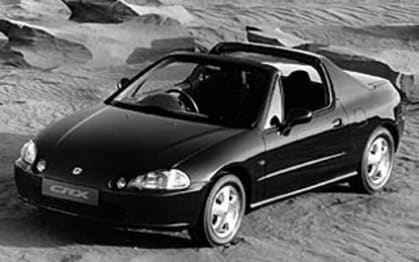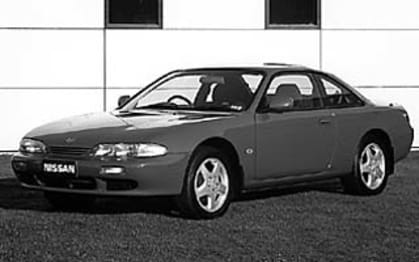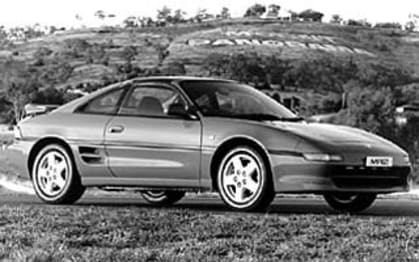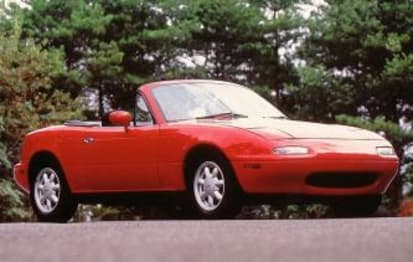
Used Honda CRX review: 1992-1998
- Honda CRX
- Honda CRX 1992
- Honda CRX 1993
- Honda CRX 1994
- Honda CRX 1995
- Honda CRX 1996
- Honda CRX 1997
- Honda CRX 1998
- Honda CRX Reviews
- Honda Reviews
- Honda Coupe Range
- Coupe
- Honda
- Used Car Reviews
- Buying tips
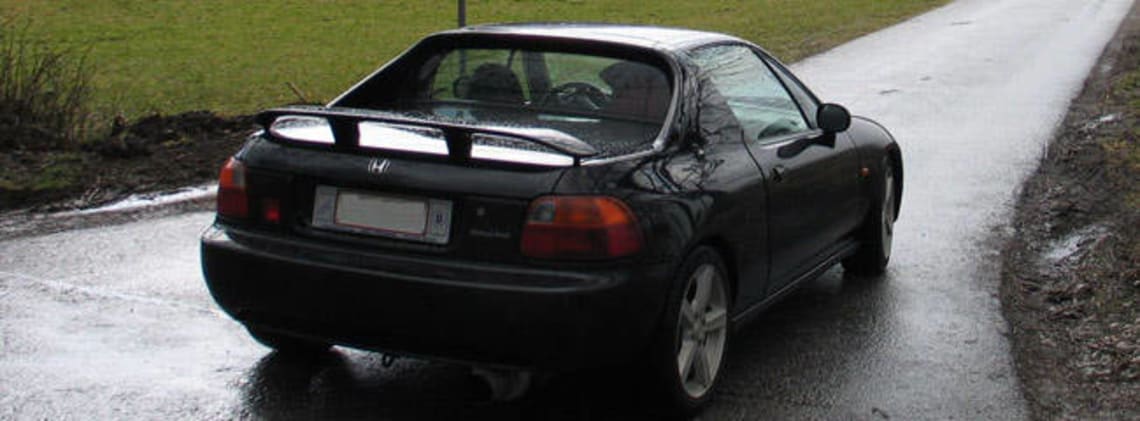
The Honda CRX will be making a comeback of sorts when the Hybrid CRZ is released on the world this year. It’s been a long time between drinks for Honda’s compact sports range.
The early 90s was a time when manufactures were looking for variety in their line up with a “something for everyone” approach. The Generation 3 CRX coupe (sold overseas as the Del Sol), that replaced the successful ED Civic based CRX hatch, filled Honda’s sports car space nicely.
The new shape was introduced to compete head on with the Toyota MR2 and Mazda MX5. The overall look of the car made many people think it had a mid mounted engine. Overly curvy lines were a departure from the earlier squared off hatch look of its predecessor.
MODEL WATCH
The Generation 3 CRX features electric windows, power steering, ABS with four wheel discs, front and rear sway bars, and a manual hard top convertible roof. The electric rear window gives a true wind in the hair convertible experience, unlike other targas like the Nissan NX Coupe and Toyota MR2.
The roof unclips on both sides easily and stores in the boot on a rail mount. This mount allowed plenty of boot stowage without having to remove the roof to get access to your bags. An easy job for two though it’s tricky on your own.
The CRX featured the rev-happy 115kw B16A Twin Cam V-Tec engine which was brand new to the Australian market. Unlike more modern iV-Tec engines the main premise behind the earlier V-Tec was power rather than economy.
There were plenty of storage compartments behind the seats and a reasonable centre console with cup holders. A nifty fold up cover for the dash head unit dispelled prying eyes when the roof was off at the beach.
In recent years some Grey Import examples of the Trans-Top Electric Roof models have infiltrated the Australian market. The Trans-Top, never sold locally, automates the CRX’s aluminium roof with a platform that rises from the boot area. This unique automated hardtop was a marvel at the time but is prone to expensive motor failure. Japanese delivered vehicles also have the lower spec 1.5L Single Cam engine and 3 speed auto transmissions.
IN THE SHOP
Earlier examples are getting tired now with most clocking over 200000ks. Look for models after 1994 with a facelift giving a driver’s side airbag, improved roof seal design, improved seat fabric and minor engine tweaks. Close to every CRX will have roof leaks, so expect to fork out at some point for replacement seals. A recall in the mid 90s resolved some roof noise issues and leaks though this was not compulsory.
The CRX is still a popular car for P plater boy-racers with many being heavily modified. Look for as close to original condition as possible. The low factory seats and ride height are often exaggerated by lowering to the point where the cars are very difficult to drive and often illegally modified.
Check closely for door sill rust, mildew smells in boot and cabin, and previous accident damage. A worn clutch is common, though gearboxes and engines are Honda bullet proof.
Like all Honda’s a full service history is a must, with these engines requiring frequent oil changes and premium unleaded as standard. Servicing costs are reasonable though with filters etc being shared with more modest Honda vehicles.
Maintenance of the roof seals is required regularly as they are sensitive to cracking. A good squirt of lanolin based oil will do the trick.
ON THE ROAD
The CRX is a nippy performer but takes a bit of right foot gusto to get to its sweet spot. The V-Tec cam lobes kick in hard at 4500rpm up to the 7600rpm rev limiter. Lower in the rev range it needs a bit of encouragement, but will happily pull you through peak hour comfortably.
Based on the Civic (EG) chassis, which to this day is acclaimed as one of Honda’s greatest performers, the CRX was not afraid of the corners. Coil-over shocks all round and up-rated sway bars give the little coupe fairly balanced handling with little understeer that typifies front wheel drive sports cars. Braking was sufficient at best, with responsive steering and a short ratio gear box helping the engine rev out that V-Tec howl nicely.
AT THE PUMP
In the city a CRX will get you around 9-11 L/100 km depending on how often you hit V-Tec. On the freeway you’re looking at around 8 L/100 km.
IN A CRASH
As far as older convertible cars go the CRX was ahead of the game with a built in roll over bar. This adds to the structural integrity of the car and reduces flex in the body also. Later models featured a drivers airbag and all models have ABS as standard.
OWNERS SAY
As an owner of this model for 3 years I found it to be a quick and easy daily drive. The carnivorous boot is great for shopping, though not so practical for trips to Bunnings. The two seater is useless for carrying any more than your partner around unfortunately. With go-cart like performance, they are a miser on the fuel with low maintenance costs, but watch out for leaking roofs.
LOOK FOR
· Honda build quality and reliability
· Petrol miser
· Leaks
· Rev happy engine
THE BOTTOM LINE
Well built and sporty convertible with looks and fuel economy too. But steer clear of heavily modified examples.
Pricing
| Year | Price From | Price To |
|---|---|---|
| 1998 | $4,510 | $6,600 |
| 1997 | $4,180 | $6,160 |
| 1996 | $4,180 | $6,160 |
| 1995 | $4,180 | $6,160 |
| 1994 | $4,180 | $6,160 |
| 1993 | $4,180 | $6,160 |
| 1992 | $3,300 | $6,160 |
Pricing guides
Range and Specs
| Vehicle | Specs | Price* | |
|---|---|---|---|
| (base) | 1.6L, ULP, 5 SP MAN | $3,300 – 5,170 | 1992 Honda CRX 1992 (base) Pricing and Specs |
Other cars to consider
$4,180
Lowest price, based on third party pricing data


